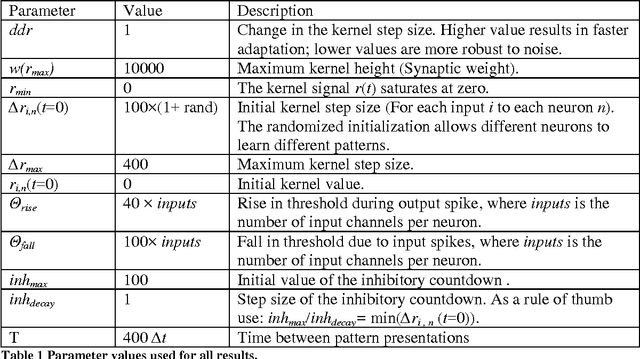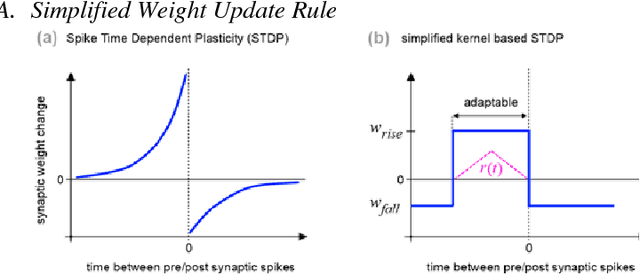Libin George
University of Western Sydney, University of New South Wales
Racing to Learn: Statistical Inference and Learning in a Single Spiking Neuron with Adaptive Kernels
Nov 15, 2014



Abstract:This paper describes the Synapto-dendritic Kernel Adapting Neuron (SKAN), a simple spiking neuron model that performs statistical inference and unsupervised learning of spatiotemporal spike patterns. SKAN is the first proposed neuron model to investigate the effects of dynamic synapto-dendritic kernels and demonstrate their computational power even at the single neuron scale. The rule-set defining the neuron is simple there are no complex mathematical operations such as normalization, exponentiation or even multiplication. The functionalities of SKAN emerge from the real-time interaction of simple additive and binary processes. Like a biological neuron, SKAN is robust to signal and parameter noise, and can utilize both in its operations. At the network scale neurons are locked in a race with each other with the fastest neuron to spike effectively hiding its learnt pattern from its neighbors. The robustness to noise, high speed and simple building blocks not only make SKAN an interesting neuron model in computational neuroscience, but also make it ideal for implementation in digital and analog neuromorphic systems which is demonstrated through an implementation in a Field Programmable Gate Array (FPGA).
Turn Down that Noise: Synaptic Encoding of Afferent SNR in a Single Spiking Neuron
Nov 11, 2014



Abstract:We have added a simplified neuromorphic model of Spike Time Dependent Plasticity (STDP) to the Synapto-dendritic Kernel Adapting Neuron (SKAN). The resulting neuron model is the first to show synaptic encoding of afferent signal to noise ratio in addition to the unsupervised learning of spatio temporal spike patterns. The neuron model is particularly suitable for implementation in digital neuromorphic hardware as it does not use any complex mathematical operations and uses a novel approach to achieve synaptic homeostasis. The neurons noise compensation properties are characterized and tested on noise corrupted zeros digits of the MNIST handwritten dataset. Results show the simultaneously learning common patterns in its input data while dynamically weighing individual afferent channels based on their signal to noise ratio. Despite its simplicity the interesting behaviors of the neuron model and the resulting computational power may offer insights into biological systems.
 Add to Chrome
Add to Chrome Add to Firefox
Add to Firefox Add to Edge
Add to Edge